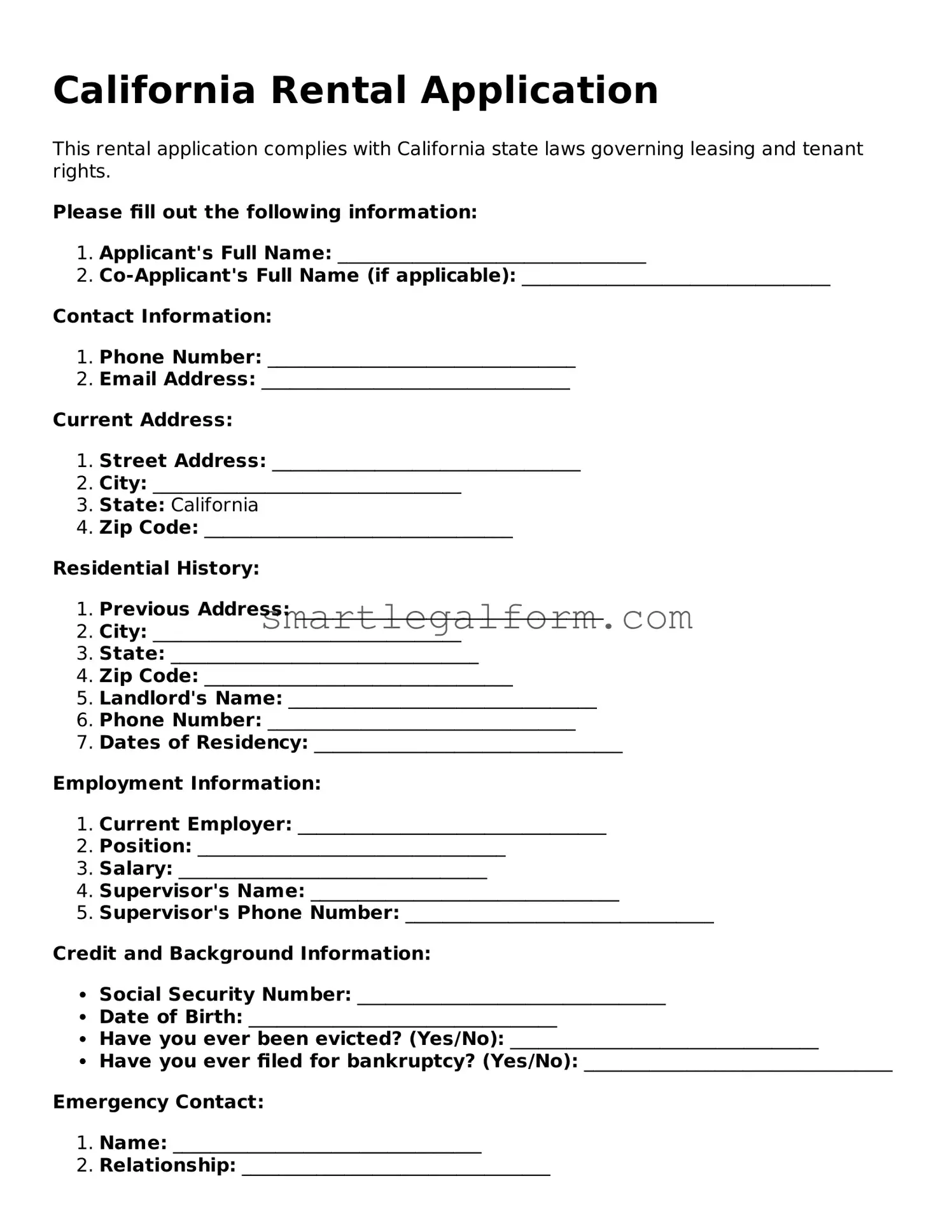Filling out a rental application in California can be a daunting task, and many individuals make common mistakes that could jeopardize their chances of securing a rental property. Understanding these pitfalls can help applicants present themselves in the best possible light. Here are eight frequent mistakes to avoid.
One significant error is incomplete information. When applicants fail to fill out all required fields, it raises red flags for landlords. Every section of the application is important, and skipping questions can lead to assumptions about a person's reliability or seriousness. Always ensure that every question is answered thoroughly.
Another common mistake is providing inaccurate personal details. This can include misspellings of names, incorrect social security numbers, or wrong addresses. Such inaccuracies can create confusion and may even lead to a denial of the application. Double-checking all personal information before submission is essential.
Some applicants neglect to disclose rental history accurately. Omitting past addresses or failing to mention previous landlords can be detrimental. Landlords often contact past landlords for references, and any discrepancies can be viewed as a lack of transparency. It’s crucial to provide a complete rental history.
Financial information is another area where mistakes frequently occur. Applicants may understate or overstate their income. Being honest about income is vital. Landlords typically verify income, and discrepancies can lead to immediate disqualification. Providing accurate documentation can help establish trust.
Additionally, many people fail to include necessary documentation. Often, landlords require proof of income, identification, and rental history documents. Not providing these materials can delay the application process or result in outright rejection. Always check the application requirements and ensure all documents are included.
Some applicants also overlook the importance of references. Providing strong, relevant references can significantly bolster an application. Many individuals list family members or friends who may not be able to provide a professional endorsement. Instead, consider including former landlords or employers who can vouch for reliability and character.
Another mistake involves neglecting to proofread the application. Spelling errors, grammatical mistakes, or unclear writing can create a negative impression. Taking the time to review the application for clarity and correctness can make a substantial difference in how an applicant is perceived.
Lastly, failing to follow up after submitting the application can be a missed opportunity. A polite inquiry about the status of the application shows enthusiasm and professionalism. It can help keep an applicant’s name fresh in the landlord’s mind and demonstrate a proactive attitude.
By being aware of these common mistakes, individuals can approach the rental application process with confidence. Taking the time to ensure accuracy and completeness can lead to a smoother experience and increase the likelihood of securing a desired rental property.
